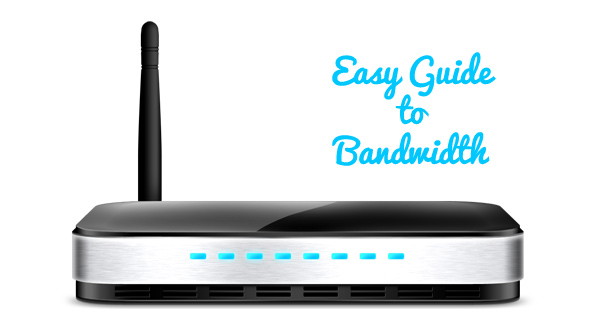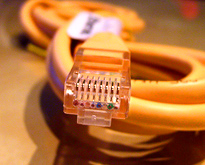Last Updated on March 6, 2024
Few Internet conversation held these days do not include that ubiquitous word “bandwidth,” but few people really understand much beyond the general idea that more bandwidth is a good thing. Understanding the definition of bandwidth can help companies and homeowners make better Internet decisions – and understand those Internet conversations better than ever before.
Bandwidth Definition

There is a general and a specific definition of bandwidth, which is the primary reason that people grow confused. Generally, Bandwidth refers to how fast an Internet connection is. The better or higher bandwidth is, the faster the Internet connection will be – good news for downloading photos or streaming music and movies.
Specifically, when someone uses a number with bandwidth, such as 27 Mbps, they are referring to the maximum data transfer rate of an Internet connection when data is downloaded. This is the best possible speed, but the Internet connection will vary and often fall well below the stated bandwidth. This is why alternative types of bandwidth exist, such as average bandwidth for a connection – a more useful number.
Internet Connections and Bandwidth
DSL: DSL options use phone lines for Internet connections. Thanks to advanced DSL technologies, speeds for downloads can reach up to 20 Mbps for residential uses. Businesses typically choose faster options than DSL lines.
Cable: Cable Internet connections uses cable television lines instead of phone lines to carry data. The upgrade allows for much faster speeds, up to 100 Mbps for downloads. Businesses, however, can achieve much higher speeds with their own, enterprise-based connections.
Fiber Optic: Fiber optic lines use glass threads and light in a unique type of connection that offers some of the highest speeds available in the world. Bandwidth for these connections can easily go over 100 Mbps and sometimes much higher. While fiber optic lines offer some of the best bandwidth around, they are not a common part of community infrastructure like phone and cable lines. This makes them expensive and difficult to install in some places.
Dedicated Lines: Dedicated lines can be cable, DSL, or fiber optic lines, but they are used only by one business. This improves speeds and adds extra services.
Subscription Options for the Best Bandwidth
Internet providers usually offer companies, and sometimes even homeowners, several different types of bandwidth depending on their plans for an Internet connection.
Typical offerings include:
Basic Plans: Basic plans a simple Internet connection at the lowest bandwidth that providers can offer. The level varies depending on the company. Very low bandwidth is only suitable for simply websites and email. Average bandwidth should be sufficient for homeowners who want to stream music and spend time on sites with lots of rich media.
High-Speed Options: Providers also offer several options for greater bandwidth. These options are useful when users do lots of Internet gaming or video streaming. They are also designed for businesses that want to run their own servers to offer cloud services or similar options to their customers. High speed options may also include some analytic services.
Custom Solutions: Some providers may offer customized bandwidth options through specific channels and with accompanying services. This is an option available to businesses with unique needs.
The entire point of this simple guide is to select the right bandwidth plan for you. If you mainly use Internet to run your business, spending a little more for faster service and more bandwidth is a smart choice to make. Once you get your Internet installed, be sure to do a test run your first month. Just like hosting providers, most Internet service providers have a dashboard for their customers. Once logged in, you’ll be able to see how fast your service is and how much bandwidth you’re using.

